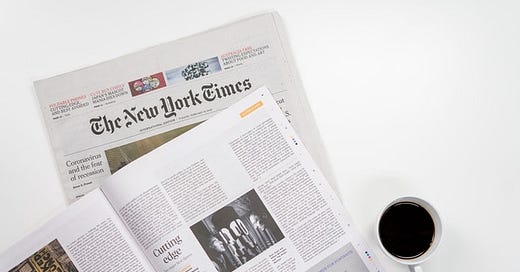Why Buffett Loves Winner-Take-All Companies
Read it on your browser: Why Buffett Loves Winner-Take-All Companies
Many of the top performing companies today operate in a winner-take-all or winner-take-most business dynamics.
Today, some common examples include wholesale retailers such as Costco or eCommerce giant Amazon, where size confers cost advantages from economies of scale that help keep competition at bay.
Or the advertising business, such as Facebook and Google. This is because a large user base allows them to have the largest data set, provide the most relevant content and attract the most amount of advertisers.
In the past, it was the newspaper business. Business was so profitable, it was difficult not to make money, no matter how inept the journalism or how incompetent the management.
In his 2006 letter, Buffett explains, “For most of the 20th Century, newspapers were the primary source of information for the American public. Whether the subject was sports, finance, or politics, newspapers reigned supreme. Just as important, their ads were the easiest way to find job opportunities or to learn the price of groceries at your town’s supermarkets.”
Even if a city has two papers, customers wouldn’t want to pay for two papers, and the one that is ahead in readership would usually win. Advertisers preferred the paper with the largest circulation, and readers preferred the paper with the most ads and news pages.
Today, we call it the flywheel effect. An increased readership begets an increased number of advertisers, which in turn begets an increased number of readers. Back then, Buffett referred to it as the “survival of the fattest”.
Once the competition is eliminated, the paper will have tremendous pricing power for both advertisements and circulation. The rates for both advertisers and readers would be raised annually, and profits would start rolling in. For owners, this would be a dream come true.
Fixed costs are high in the newspaper business. It’s good news when revenue is skyrocketing since costs don’t increase with revenue (they’re fixed). This is also known as operating leverage.
But it’s bad news when revenue is declining since those costs are still incurred. Operating leverage in reverse.
Read here to find out more about operating leverage.
Businesses that have a flywheel effect are usually great investments. Examples include platforms such as eCommerce, social media, ride-hailing, hotel booking, and ridesharing.
It’s critical to understand what drives the flywheel. The newspaper business relied on being the main source of information. With the advent of the internet, readers no longer had to rely on newspapers for job searches, shopping catalogs, sports scores, and more. A falling readership will result in a drop in advertising, and the flywheel will begin to unwind.
In the same way, we must understand what drives today’s winner-take-all businesses.
Facebook’s flywheel is driven by connecting the world together. Google is by generating the best search results. Amazon is by bringing the best value for consumers in terms of price and convenience.
Anytime these drivers are disrupted, it’s time to get out.
That’s the end of this post! If you have found it useful, share it to help more people find it :)
-Thomas Chua
Thanks for reading! If you haven’t already, do consider joining us as a premium member and gain access to stock analysis on high-quality growth companies.
Companies covered: Twilio, Facebook, Sea Limited, Alibaba, Crowdstrike, and more!



